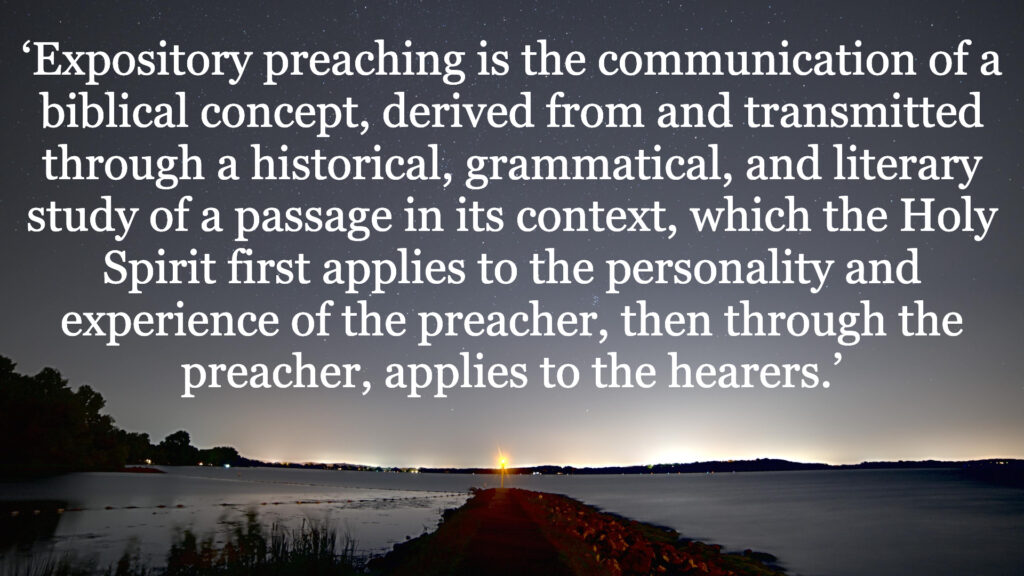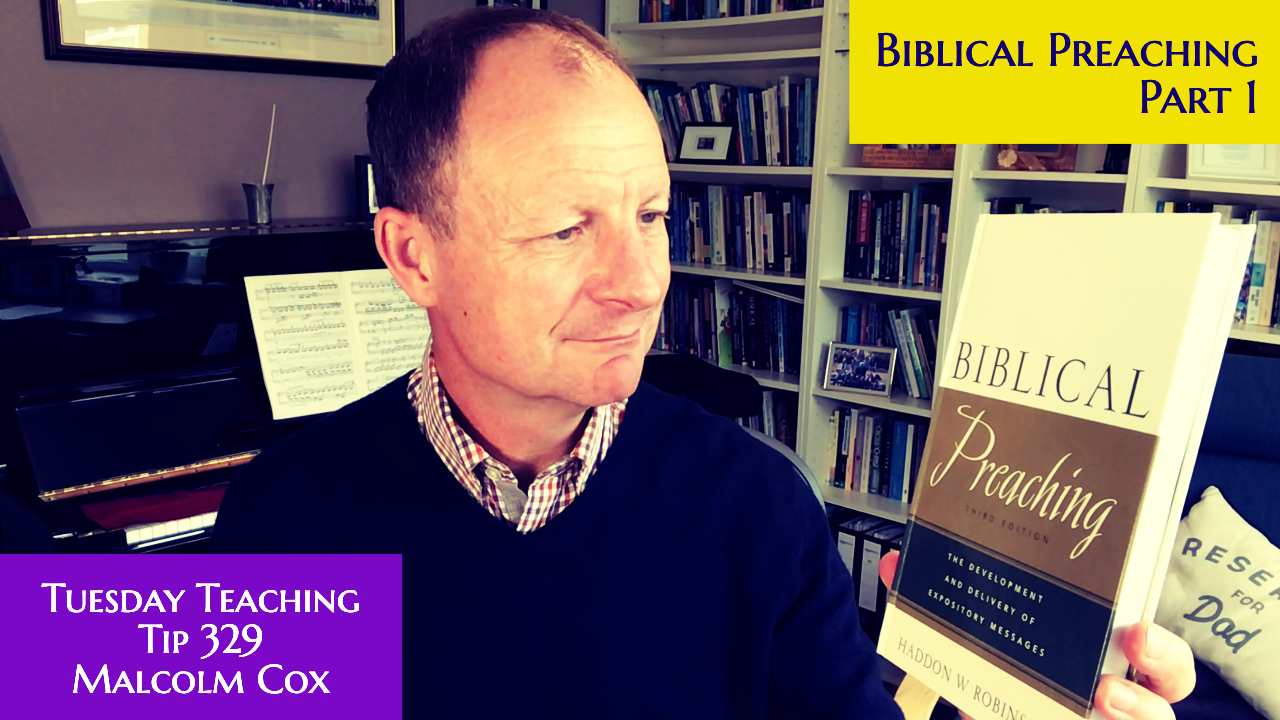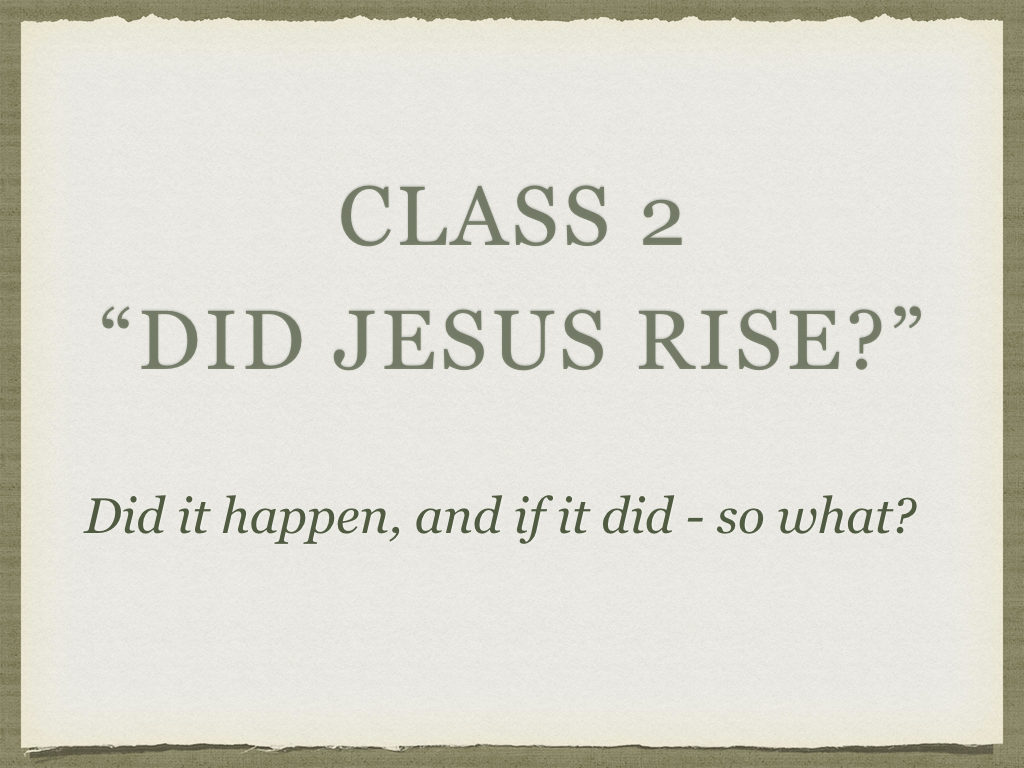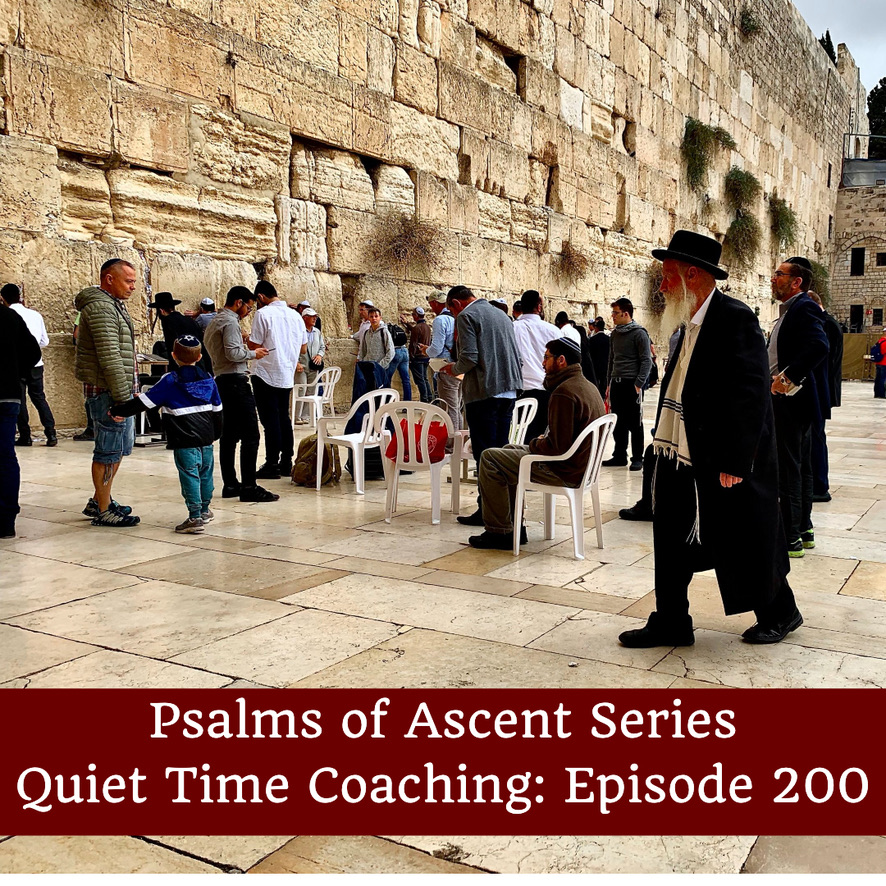
The first time I read Haddon Robinson‘s book it thrilled me. It is not a novel with a stimulating plot. Nor is it poetry of sublime imagination. Instead it is an eminently practical book about Biblical preaching. But it is more than that.
I am reading it again (for the fourth or fifth time), because it is one of the required reading texts for the current Homiletics Module in AIM UK&Ireland. Given that I am guiding students through the module, it seems only right to refresh my memory of its content. In doing so I have become freshly inspired by it and decided to produce a series of Teaching Tips episodes based on the chapters of the book. We will not cover everything in each chapter, but pull out some points on which to focus. These episodes should not be a substitute for reading this wonderful book in its entirety. Indeed, perhaps the overriding motivation for making these recordings is to persuade you to read the book.
One other point should be made. This is not a book only for those who preach on Sunday. The principles within it apply to preparing any presentation, whether on a Sunday, a midweek teaching class, a teaching day, a local group meeting in your home, a family devotional, preparing thoughts for the Lord’s supper and many other circumstances. In fact, I guarantee that studying and applying the principles in this book will improve your own personal Bible study and therefore your relationship with God.
Today we look at the first chapter.
Chapter 1: The case for expository preaching
The outline of the chapter with a few notes from myself is below, but we will not examine these in detail. Instead we will explore Haddon Robinson’s definition of expository preaching.
- The devaluation of preaching: “So the Twelve gathered all the disciples together and said, “It would not be right for us to neglect the ministry of the word of God in order to wait on tables.”(Acts 6:2 NIV11)
- The case for preaching: “That is why I am so eager to preach the gospel also to you who are in Rome.” (Romans 1:15 NIV11)
- The need for expository preaching: Is it understood and applied well?
- The definition of expository preaching: ‘Expository preaching is the communication of a biblical concept, derived from and transmitted through a historical, grammatical, and literary study of a passage in its context, which the Holy Spirit first applies to the personality and experience of the preacher, then through the preacher, applies to the hearers.’ p5
- The passage governs the sermon: An attitude more than a method. Not about accuracy as such, but about what governs our preaching. Are we submitting the text to our theology, or our theology to the text?
- The expositor communicates a concept: The words of the text matter, but its meaning is the point.
- The concept comes from the text: If we expect our hearers to listen to us, we must first listen to the Word.
- The concept is applied to the expositor: We are first shaped by the lesson, then shape the lesson for others. The Spirit develops messengers, not messages.
- The concept is applied to the hearers: “All Scripture is God-breathed and is useful for teaching, rebuking, correcting and training in righteousness, so that the servant of God may be thoroughly equipped for every good work.” (2 Timothy 3:16–17 NIV11)
- Conclusion: We preach expository sermons when…
- We have studied a passage in its context, giving attention to its historical, grammatical, and literary setting;
- We have in some way experienced, through the work of the Holy Spirit, the power of our study in our own lives;
- And from this, we shape the sermon so that it communicates the central biblical content in a way that is meaningful to our hearers.
Haddon Robinson’s definition of expository preaching is set out here:
‘Expository preaching is the communication of a biblical concept, derived from and transmitted through a historical, grammatical, and literary study of a passage in its context, which the Holy Spirit first applies to the personality and experience of the preacher, then through the preacher, applies to the hearers.’ p5
Mark 5:25-34
- The concept: Faith that heals (saves)
- The historical, grammatical, and literary context: Jairus’ daughter, the ‘Markan sandwich’, the miracles of Jesus, the themes emphasised in Mark, the location of the healing
- Applied to the personality and experience of the preacher: What would it look like for me to trust in a faith that heals? What difference would it make to my week? What would people notice about me?
- Applied to the hearers: What does faith that heals look like for my audience?
Consider joining AIM UK&Ireland to develop your understanding of Scripture: https://aimukandireland.com/. Our current module is Homiletics (the preparation and delivery of lessons).
Contact us here with enquiries: courses@aimukandireland.com
The website can be found here: https://aimukandireland.com
Please add your comments on this week’s topic. We learn best when we learn in community.
Do you have a question about teaching the Bible? Is it theological, technical, or practical? Send me your questions or suggestions. Here’s the email: malcolm@malcolmcox.org.
If you’d like a copy of my free eBook on spiritual disciplines, “How God grows His people”, sign up at my website: http://www.malcolmcox.org.
Please pass the link on, subscribe, and leave a review.
Remember to keep calm, and carry on teaching.
God bless, Malcolm



